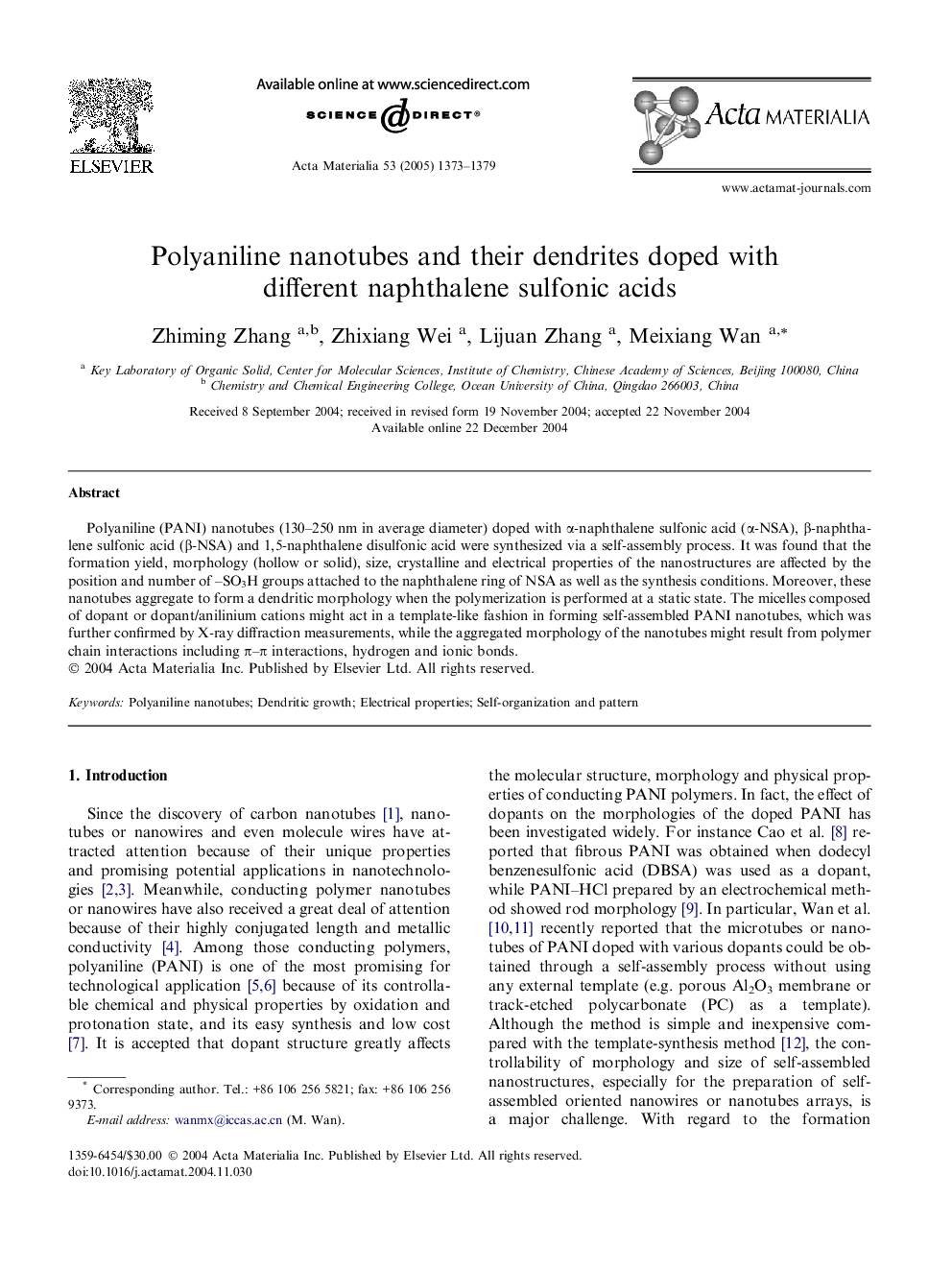| Article ID | Journal | Published Year | Pages | File Type |
|---|---|---|---|---|
| 10621056 | Acta Materialia | 2005 | 7 Pages |
Abstract
Polyaniline (PANI) nanotubes (130-250 nm in average diameter) doped with α-naphthalene sulfonic acid (α-NSA), β-naphthalene sulfonic acid (β-NSA) and 1,5-naphthalene disulfonic acid were synthesized via a self-assembly process. It was found that the formation yield, morphology (hollow or solid), size, crystalline and electrical properties of the nanostructures are affected by the position and number of -SO3H groups attached to the naphthalene ring of NSA as well as the synthesis conditions. Moreover, these nanotubes aggregate to form a dendritic morphology when the polymerization is performed at a static state. The micelles composed of dopant or dopant/anilinium cations might act in a template-like fashion in forming self-assembled PANI nanotubes, which was further confirmed by X-ray diffraction measurements, while the aggregated morphology of the nanotubes might result from polymer chain interactions including Ï-Ï interactions, hydrogen and ionic bonds.
Related Topics
Physical Sciences and Engineering
Materials Science
Ceramics and Composites
Authors
Zhiming Zhang, Zhixiang Wei, Lijuan Zhang, Meixiang Wan,
